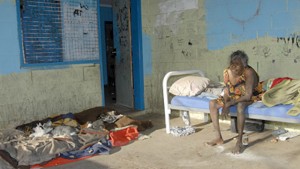Home » Commentary » Opinion » Another year, another failure to close the gaps
· THE SPECTATOR - FLAT WHITE

 A new year typically brings optimism, hope and a sense of progression. However, for the most disadvantaged Indigenous people, 2018 has started like so many before it — with a grim reminder of just how far they remain behind the rest of the country.
A new year typically brings optimism, hope and a sense of progression. However, for the most disadvantaged Indigenous people, 2018 has started like so many before it — with a grim reminder of just how far they remain behind the rest of the country.
Four of the seven Closing the Gap targets are set to expire this year, and not one is set to be achieved. This news is not new. In what is now an annual ritual, the Prime Minister releases a report each February confirming that yet again the majority of targets are not on track to be met.
It is ten years since the Closing the Gap strategy was launched. Anniversaries can be seminal moments – and perhaps it is time to reflect on the often incongruent relationship between the closing the gap targets and the reality on the ground.
For example, the failure to halve the gap in employment outcomes by 2018.
Getting the poorest Indigenous people into jobs is undoubtedly pivotal to closing the gap. However, on the ground it appears that the publicly-funded ‘tick box’ programs continue to do more to distance Aboriginal people from the economy than involve them in it.
For an example of this, one only must look at the remote work-for-the-dole Community Development Programme.
The programme attempts to prepare Indigenous people for eventual employment by requiring them to undertake ‘work like’ activities in return for welfare payments. However, ‘work like’ has a very loose definition, and in certain cases attending hygiene classes is counted as work by CDP providers.
Others have been accused of signing off on uncompleted work hours in order to meet government funding requirements.
Unsurprisingly, the 2018 employment target will not be met. You cannot expect someone to actively engage in the economy when the only experience many have of employment is in the form of what can only be described as ‘fake work’.
Furthermore, the socio-economic issues experienced by disadvantaged Indigenous people are far too entrenched to be resolved by a mismanaged work-for-the-dole program.
One positive of this failure is the opportunity to reassess. The dynamics of Indigenous economic development have evolved significantly since 2008, and targets should evolve with it. New targets should look at enabling the wider economic capacity of Indigenous people.
The federal government’s Indigenous Procurement Policy has put small business ownership at the forefront of Indigenous people’s minds. However, Aboriginal people are self-employed at only a third of the rate of other Australians.
The Minister for Indigenous Affairs has raised the possibility of setting home ownership targets. Certainly, without home ownership, Indigenous Australians are highly restricted from participating in the economy — as it is almost impossible for many to take out bank loans, and there is limited potential for intergenerational transfers of wealth.
In non-remote areas, Indigenous people own homes at half the rate of non-Indigenous Australians. Remote communities face even greater challenges, with the communal land ownership structures entrenched by native title making private home ownership impossible. It remains to be seen exactly what policy approaches the government might suggest to close this complex gap on ownership.
It will likely take more than another decade to close the gaps. However, as a new year begins it is imperative that any new strategy looks to harness more appropriate enablers of economic development.
Charles Jacobs is a Policy Analyst in the Centre for Independent Studies Indigenous Research Program and author of the report: Risky Business: the problems of Indigenous business policy.
Another year, another failure to close the gaps